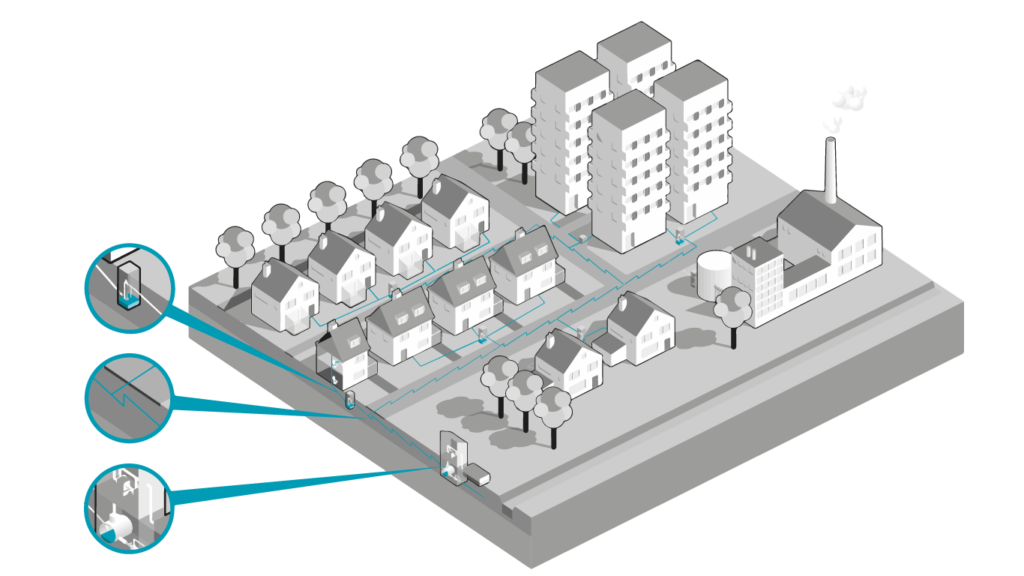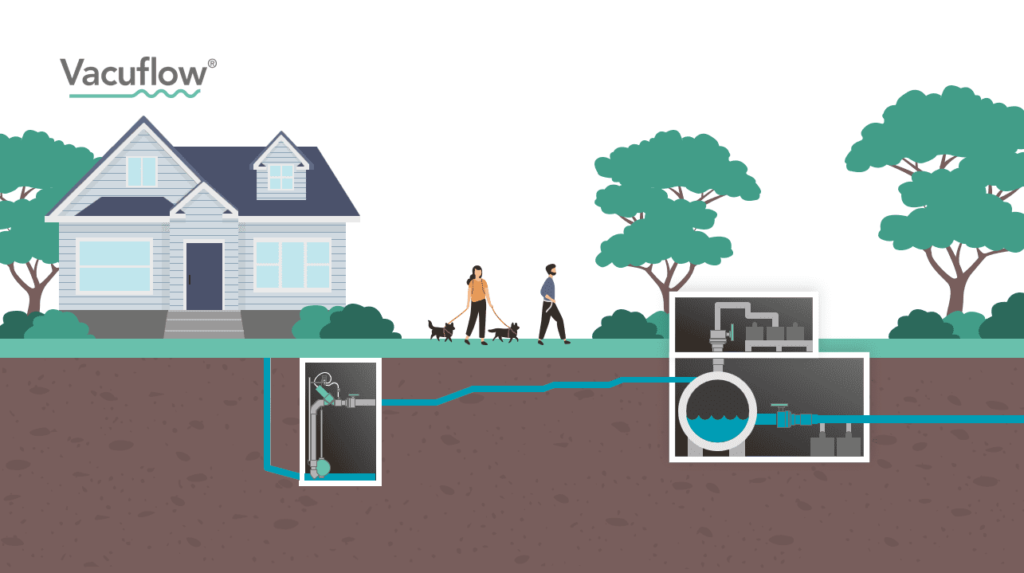Vacuum station
A crucial component in wastewater management, a vacuum station facilitates the movement of sewage from the collection chamber to treatment facilities. Equipped with vacuum pumps, it creates negative pressure, pushing wastewater through a vacuum pipe network to the station. At the station, air and water are separated in the vacuum tank. The discharge pumps transport the sewage from the vacuum tank into the main sewer line that leads to the treatment facility. A control panel controls the vacuum station components and the odor filter, filters the odor coming from the vacuum pumps. The vacuum station is designed to ensures efficient operation.






